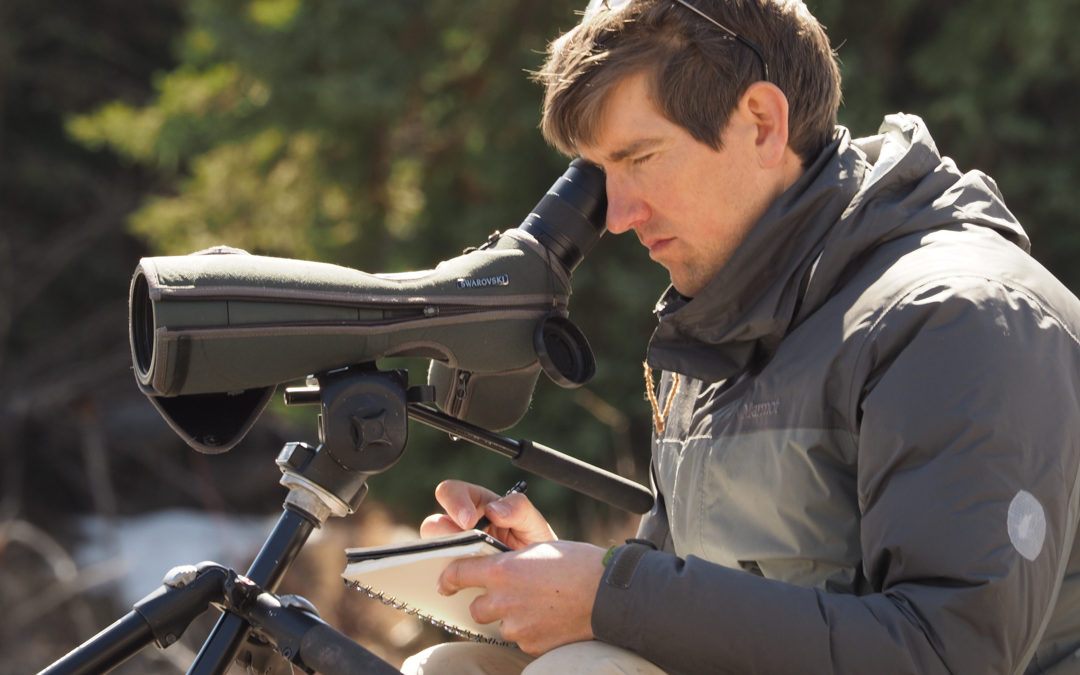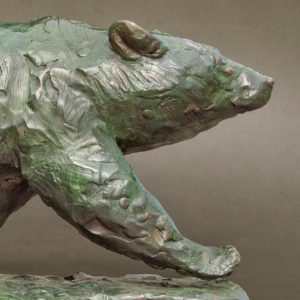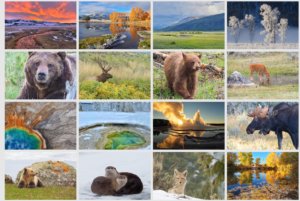Put your camera away. Stop your car. Take a few minutes to pause along your walk to stop and contemplate—then pull out a sketch pad and start sketching the nature around you. Don’t have one? Correct this ASAP and better yet, get a few and place one in your vehicle, backpack, purse, the back of the commode and a small one in your back pocket. If you don’t have a sketch pad, then looseleaf paper, something hanging out of the overflowing recycling bin at work, a napkin, most anything will do in a pinch.
Why bother sketching nature? Art makes you SEE the world better. Sketching—even the most rudimentary scribbles— has the ability to peel back the layers of places you thought you always knew and see them again for the first time. “But I’m not an artist,” many will say. That’s fine, don’t worry about it, we’re not trying to be artists here. The focus isn’t as much on making “art” as it is on making meaning. Sketching draws you closer to your wild animal neighbors, nature, and life as a whole.
Here are 3 reasons why you need to put the camera down and start sketching nature:
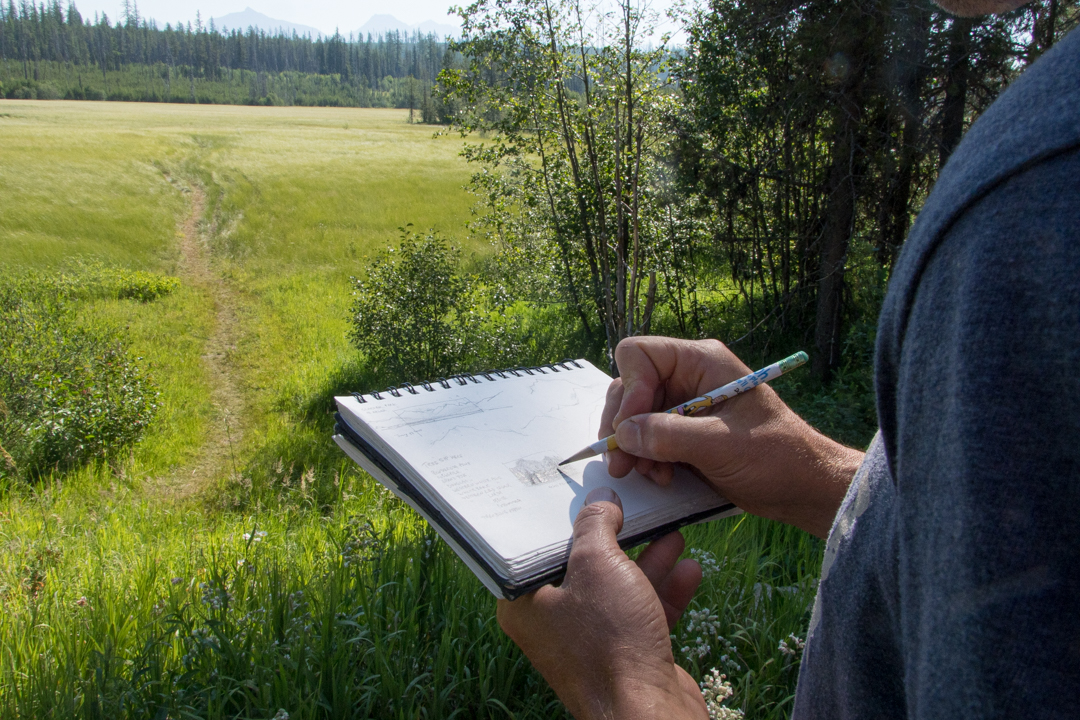
1. Sketching allows you to take time out:
Saying to yourself, “I’m going to do a sketch,” is sometimes all that is required to put the world-at-large on hold; use it as an excuse to take some quality time for yourself. A physical ‘thing’ or a commitment to someone else, something outside us is often just what we need to help us shift gears. By taking time out to sketch something in nature, you indulge in something that is not only calming, enjoyable and meaningful, but is also entirely for you alone.
The act of holding the sketchbook in your hand, like that middle school hall pass, acts like a permission slip to life, it gives you license to linger, observe and wonder. Unlike the kids who used the hall pass to smoke in the boys room, the sketchbook, scrap paper, whatever, is there to anchor you in a physical place long enough to misbehave in a good way, to let that place reveal something special to you. It doesn’t matter whether it is in a city or a wilderness, we tend to move through life too quickly and miss a lot. Making art is about finding meaning and meaning only comes when we can get outside of ourselves and SLOW DOWN.
2. Sketching opens up a whole new world (both inside and out):
When we put pencil or pen to paper, we fire networks in the body that so often lay idle. By staying in one place and making an effort to reproduce what we see (or even what we hear, smell, feel, taste…) we discover details that have heretofore been a blur. Our senses become more attuned to the world around us.
Placing focused attention on the lines of a lamp post, the bark of a tree, a bird’s feather or the patterns in a stream, unlocks a door. The sketch pad is a portal and once opened with whatever mess you make on the paper (yes, I’m giving you permission to make messes too!) points out delicious details that have been missing in your life. I’m talking about the little things, things that words don’t capture: the sweetness of a cat’s paw resting over her face while asleep, the magical, spiraling path that crimson leaf takes on its journey to the ground, or that tiny tip of the starfish’s arm that is just starting to grow back after injury. Explore with your eyes and your pen or pencil, and indulge your divine intuition. The path that unfolds will be one of awe, revelation, timelessness and one that is uniquely yours.
3. Sketching helps you be your better self
Stressed at work? Injured and stuck in bed with that nagging pain in your back that feels like some twisted gnome has been taking pot-shots at you with a belt sander? For all sorts of reasons we place our clawed fingers through our frazzled hair, drop our aching head into open, clammy palms. There is no shortage of reasons why our days have not gone better and our nights could not be more settling. But then you spy that little black sketchbook on your nightstand or peaking out of the door pocket of your car…
When the cover falls open, no matter what page it opens to, you are instantly transported to another place and time, and often a better one. Don’t believe it? Try it.
Finding our highest and best selves, doing those things that make us feel most fully alive and in line with our inner compass brings out who we are when we are at our best… and there is evidence of it right there in front of you. What might look to someone else like a bunch of random lines, smeared tones or chaotic marks is a lifeline to the calm, collected, patient and perennially curious YOU, on those days when you are anything but.
There on the page of your sketchbook is the physical evidence of you at your best, it is your lifeline when you need it most. Bound amid the pages are the trappings of a few minutes, an hour, a day, a lunch break away from crabbing coworkers, that you spent well, doing something that was infinitely meaningful to you. Sure your sketchbook might be something you’d like to share with others at times, but more critically, it is there to remind you why you are here.
On these pages are the reminders of why you showed up: the joyous blessings you found in the late-season forest on that cold, rainy, November day. Your sketches are the records of what counts, and they will become some of your most treasured possessions.
Eventually you will want to learn to sketch better, which is entirely within your ability. Drawing is as learnable as typing—really! There are methods to follow and techniques to explore that will help you draft things that look more like you want them too. But don’t lose sight of what’s MOST important: showing up, opening your mind, and following your inner child.
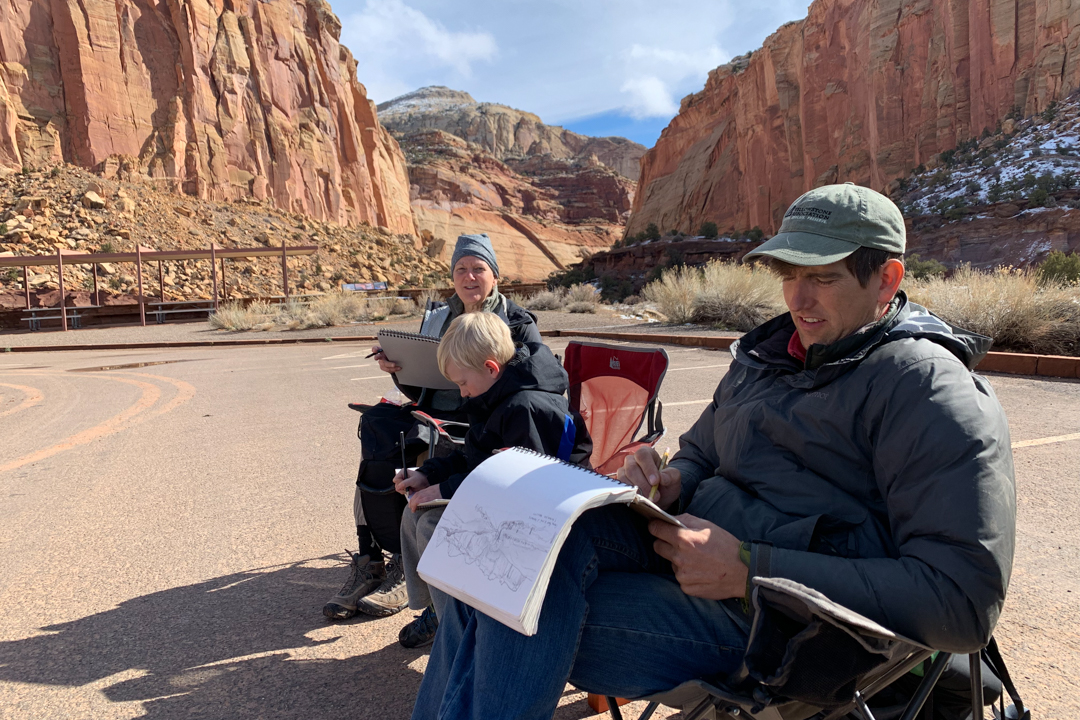
Tips for beginning a nature sketching practice
1. Take a notebook everywhere! That way you can sketch something when the urge strikes you.
2. Don’t over think it: let yourself noodle, scribble, scratch, erase, smear, and unbridle your inner child, let your sketches breathe and take on a life of their own .
3. Go back to the basics. When drawing an animal or object, think of how what you’re looking at relates to basic shapes–circles, squares, etc– and try approaching it that way.
4. Give yourself total freedom. Try closing your eyes and drawing the sounds you hear. Move your pen/pencil in the same manner the wind is blowing or sounds are moving. You don’t have to try to represent something realistically.
Send us an email a the “contact” button above and let us know what you discover!

